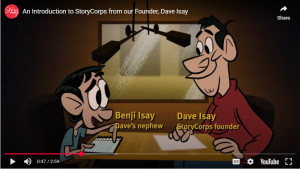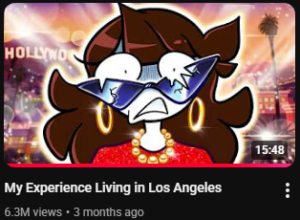A simple reflection on storytelling and the potential they hold for communities
A library is defined by its community. As information professionals committed to practicing openness, self-reflection, and empathy, librarians will do their best to ensure that any new changes or additions take into account the needs and concerns of their community patrons. It’s important that those voices are heard and shared within the community. Stories recorded through narrative inquiry can provide information professionals with valuable insight on potential changes and perspective shifts for their location and the services they offer. That kind of inquiry can also be collected as a showcase project where the responses of the public are shared to commemorate a celebration or achievement as seen with the 140 year anniversary of the Pasadena Public Library. Stories from the public hold a lot of weight that can be used strategically by librarians. However, that’s not all they have to be used for.
I really like the direction The Human Library in Copenhagen and StoryCorps are taking. People have a story to tell. Just like books, people have backgrounds and experiences that are unique and nuanced – they have stories worth sharing. Organizations like these are creating spaces where people within a community or even around the world can share their personal stories face-to-face or digitally. I hope to see more libraries and information communities consider the potential of sharing the voices of their patrons through these public collections. The closest to a collection I found within my library system in LA County was their use of the Biblioboard portal to create anthology groups. I first discovered this portal a few years ago and found that there were only three or so anthology collections – making me believe that the site wasn’t used or updated often. Looking at it now, I can see there are more collections to browse. A nice inclusion to the Biblioboard is a recent anthology called The Generations Project. It’s a project centered around preserving the “shared stories, experiences, and lessons of teens and elders in 2024” for future generations. The collection includes an ebook, one video slideshow, multiple interview videos, and photographs. While it seems to be the only collection within the portal sharing local community stories, I still believe it’s great progress of libraries (at least my local one) recognizing the potential for discussing, recording, and sharing these stories with the public. The Los Angeles Public Library located closer to downtown LA also has a similar portal for sharing their created collections with two sections highlighting archival and community stories through audio interviews.


Storytelling has so much potential. The medium can branch to more in-person, public events like seen with The Human Library. That kind of event can branch outside of a library setting to locations that open up the space to open mic style performance like seen with UnheardLA and their curated lineups that theme the stories around the city being performed in. Live storytelling can even reach the festival space with the National Storytelling Festival held in Jonesborough, Tennessee every year. I am excited to see the possible advances storytelling can make within information communities – especially when it comes to those digital collections. YouTube is one of those everyday sites that has created the perfect space for creators to share their stories. Public, open access, and free. The site makes it easy for organizations like StoryCorps to upload their audio and animated story videos and for creators like Jaiden Animations or Sarah Spaceman (two of my favorite creators) to upload their own personal stories for their community and anyone interested in related topics. I’ll admit that I don’t know if librarians or information professionals would consider creator content as storytelling. I hope that’s not the case. They follow the key mantra of DOK1 easily: “keep stories, make stories, share stories”. I’m curious to see the continued creation of story videos through YouTube and other social media sites and the continued growth of in-depth curated collections shared throughout different information communities (libraries of course included!).
References
https://tametheweb.com/2020/04/09/office-hours-narrative-inquiry/
The Human Library Reading Garden in Copenhagen
https://library.biblioboard.com/module/LA-County-Library
https://lapl.aviaryplatform.com/collection
https://laist.com/events/unheard-la
https://www.storytellingcenter.net/festival/history-of-the-festival/